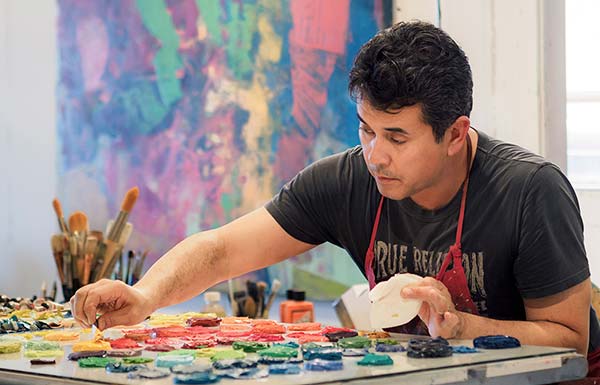Interview with Henry Jackson
Interview by Jennifer Nelson, WTP Feature Writer
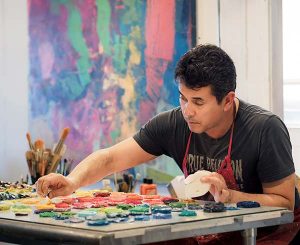
A resident of San Francisco, Henry Jackson has exhibited his abstract paintings nationally and internationally. His work is part of the permanent collection of the De Sassait Museum in Santa Clara and the Boise Art Museum in Idaho, and it is held in numerous corporate and private collections. Jackson combines figurative and abstract elements in bold, colorful paintings composed of oil paint, dry pigments, wax, graphite, and sometimes collage. He draws inspiration from the abstract expressionist movement. He received artist-in-residency awards from Monte Azul Contemporary Arts (MACA) in Costa Rica, the San Francisco Zoological Society, and the Bernard Osher Foundation, as well as a fellowship award from the Vermont Studio Center. He studied fine art and environmental design at San Francisco State University and California College of the Arts in Oakland.
See his work in WTP Vol. VII #6, courtesy of the Stewart Gallery.
Nelson: You’re clearly influenced by abstract expressionism. How did you come to the figurative in your work?
Jackson: Early in my art education, the human form was first presented for anatomical purposes, for example, hand-eye observation and discipline, and anatomy study, which were more objective than subjective. As my education progressed, I realized I was becoming more fascinated by the emotional aspect of the figure. It was also the beginning of my fascination into psychology and human behavior. This conveying of dramatics through physical gesture and facial expressions prompted my curiosity to seek deeper meaning in my works’ emotional content. Inserting the figure representationally never appealed to me, but the idea of abstracted content that related more in feeling than intellect, along with an active temperament, does. This emotional hook in whatever my media remains.
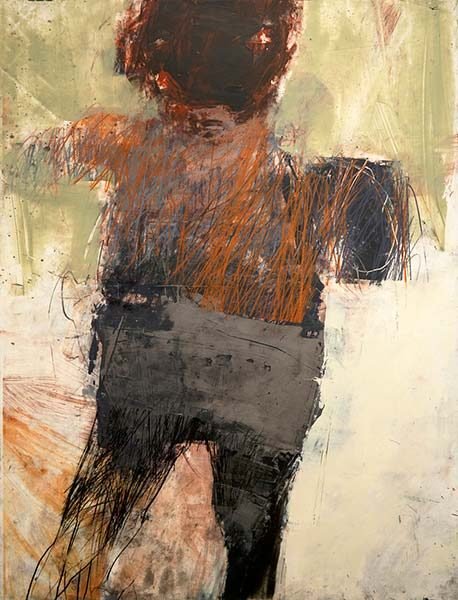
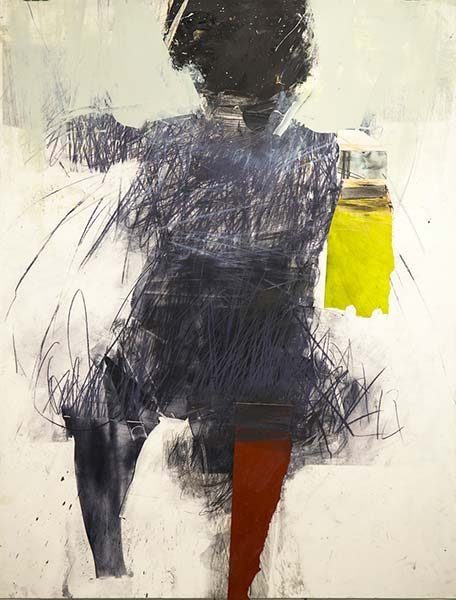
Nelson: For paintings such as “Ritual I” and “Ritual II’ that resemble primitive human figures, do you begin with an image, idea, or emotion—how figurative finally are these works in your own mind?
Jackson: I usually don’t begin a work with the purpose of landing figuratively, or as an abstract. I start by getting lost in the physicality of mark making, along with the constant pushing of shape and color. Eventually this trajectory narrows to an end result. Although at times, I do feel the figure while working, nothing specific, just more as a means of power to propel the media. If my intention is to create a figurative presence, such as in “Ritual 1” and “Ritual 2,” it’s usually in response to a specific idea I’m considering that can only be conveyed by an expressive entity.
Richard Diebenkorn once said, “…don’t discover a subject.” My younger, inexperienced self didn’t understand this at the time. But as I got further along in my practice, his comment liberated me from a set way of thinking. I now fight the compulsion to look for anything familiar, because the success of this approach, which also applies to the way I work such as using clumsy tools and constant surface rotation, prevents the piece from suffocating, and/or seeming restricted of critical energy. This also applies when a figure insists on being present. By working this way, one sees more interesting things that would not be discovered otherwise. This is a necessity to an artist who works intuitively.
But sometimes when my intent is figurative, they end up being anything but to the viewer… and I find that more interesting, if not better. To remain a curiosity is one of the things that can make a work of art successful—or at the very least inviting.
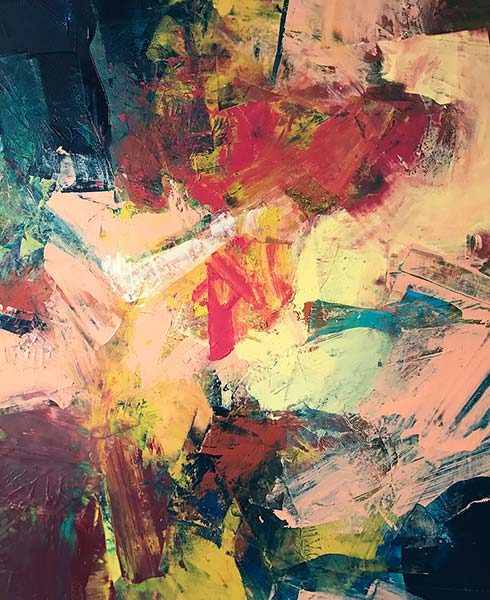
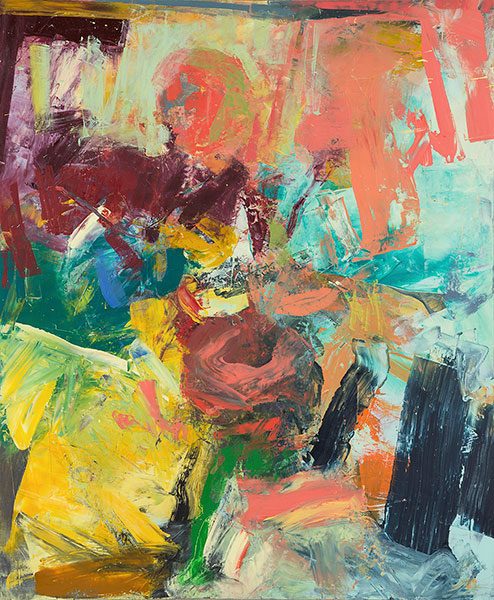
Nelson: How did your upbringing in San Francisco by a family of storytellers and your interest in archaeology impact your artwork?
Jackson: Much of my family was born in the Pacific Island region, due to my grandfather (originally from upstate New York) being stationed there during the Spanish American War. During those times of war, much of my family endured incredible hardships, as do most during wartime. Stories from that period were also incorporated with existing island folklore. I also grew up during the mid-to-late 1960s in San Francisco, where there was much social and political upheaval. As a child, these stories and experiences left a tremendous impact, especially those that could never be explained. The combination of emotional unrest, along with the unresolved, clearly stayed with me.
When I was in school, archeology seemed like a logical relation to art making. This uncovering of artifacts and lost information was fascinating to me. To this day, I find an incredible connection to tribal artifacts and their purpose, especially items related to ceremonial use. I believe these to be the contributing factors as to why my work continues to appear raw and expressive. These are the things that seek questioning.
Nelson: What led you to create large-scale video and sound installations such as the one at the San Francisco Zoo? And how does your vision as a painter affect your work in these areas of film and sound?
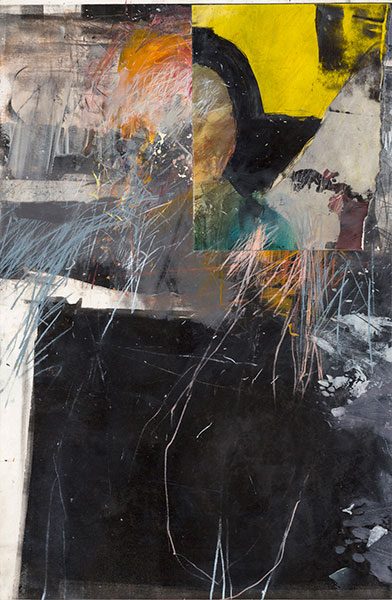
Jackson: In 2008, I was approached by the president of the San Francisco Zoo, who was also a collector, to assist him with creative ideas on how to improve some of the lesser-appealing large animal exhibits, which were structures built during the WPA at a time when artists were hired to work. The art market fell off the map and non-profit endowments were cut in half in 2008, so of course I jumped at the opportunity.
While there, I realized several potential locations for an art installation that would of course relate to wildlife. After two years of volunteering my time, I pitched the idea of an artist exhibition based on my direct experiences with the animals. I also felt that creating large-scale paintings would probably not get enough attention, since you can’t really compete with live animals. But, given that I live in tech central, a large-scale video and sound piece could be the perfect complement to the zoo-going experience. With that, an artist residency was born.
In school, I enjoyed filmmaking tremendously and so the thought of stepping away from paint for a little while and into digital was a major welcome. I wanted the content to look like a painter created it since I wasn’t a filmmaker. I thought this would be a great personal challenge to approach an experimental video from a painter’s perspective. The first video, titled Kingdom Animalia, unfolded as an artistic reverie of an animal kingdom, not unlike my paintings, only with movement and experimental sound. I was very happy with the results and fortunate that the success of that got me two more video and sound commissions from the San Francisco Zoological Society.
The experience also freed my painting approach, both compositionally and in concept. I continue to incorporate video and digital technology when possible, along with oil-based media. The fusing of these mediums continues to free the way I see and make work.
Nelson: How has spending time in Costa Rica as an artist in residence influenced your artwork?
Jackson: For me, the rainforest feels like the center of creation. It consumes and cradles you simultaneously and you embrace it eagerly with all its generous unpredictability. It allows me to step outside myself with great humility and find my center.
My projects with the San Francisco Zoo made for a nice segue into this world. My residencies in the rainforest, specifically at Monte Azul Center for the Arts, redefined what I thought immersion was about. It’s permission on a grand scale. Even though I’m not from there, the tropical and agricultural setting has also provided a greater sense of empathy with my family’s island history. This combination continues to yield me new insight into my practice long after I have left. It’s a gift that knows no end.
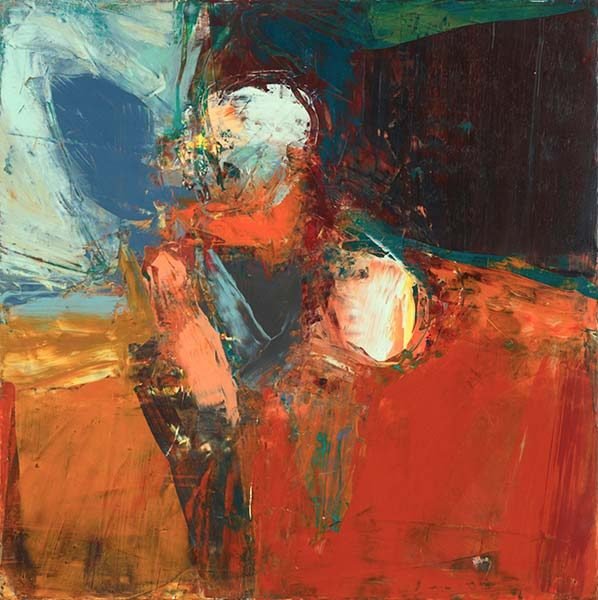
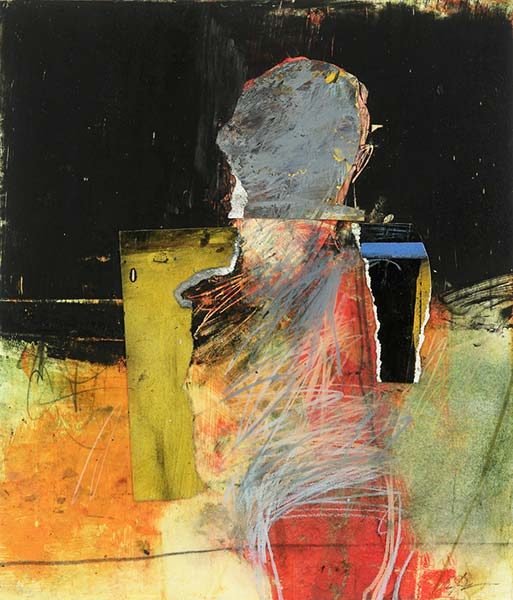
Nelson: When you’re not happy with the way a work is progressing, what strategies do you use to get back on track?
Jackson: If I find myself losing nerve, which can happen when too many pieces are in their final stages of completion, I’ll begin a new canvas and just lay down paint, with no intention other than just to load up the surface. This purging usually helps shake off the self-consciousness that accumulates.
If I’ve been working rather large for long periods with lots of color, there are times when this can over complicate, so I’ll immediately go small and monochromatic—or vice versa. Other times when I see that I’m becoming too apprehensive, I’ll move on to handmade collage, which produces more immediate results, along with new ideas on composition.
Nelson: How do you see your work evolving in the future, and do you anticipate some day working in another medium, such as sculpture?
Jackson: I plan to continue experimenting with video, along with combining digital printing and oil-based media. When done properly, I enjoy the immersive quality that video can accomplish and I’d like to incorporate that, as well as sound, into a sculptural installation.
Currently I am working on a project with artist Robert Gamblin, based on a residency we recently completed at Monte Azul. The concept will explore our rainforest experience by integrating video technology, along with traditional artist media, and merge our respective practices to create an enveloping video and sound installation.
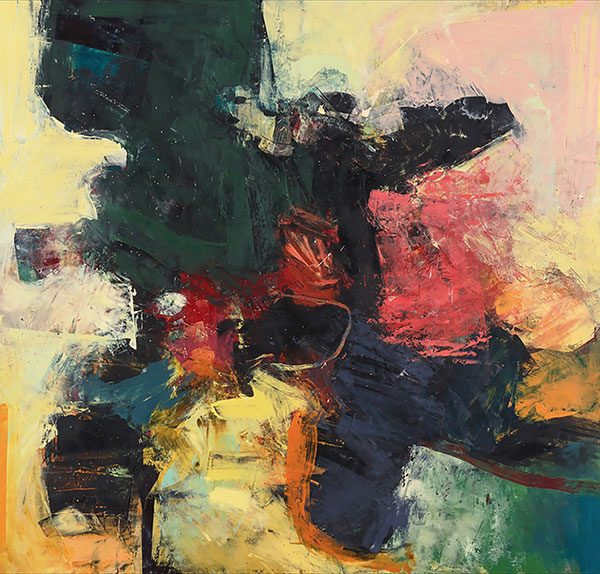
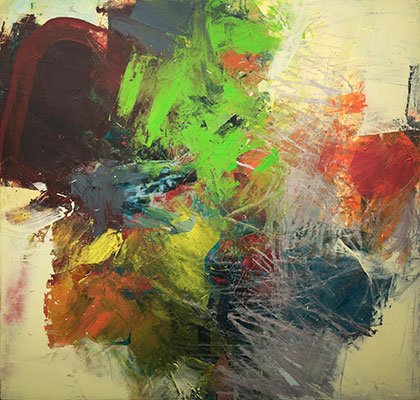
Copyright 2019 Woven Tale Press LLC. All Rights Reserved.

